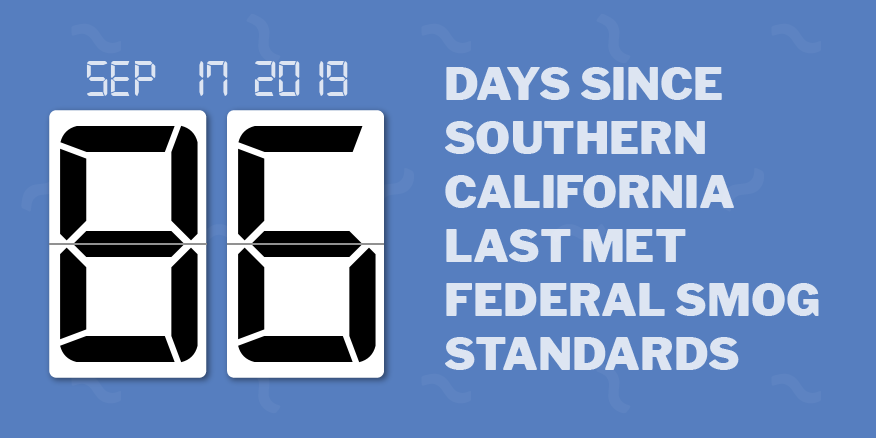
It’s no secret that our state has some of the worst air quality in the country. California is home to 7 of the 10 most polluted cities in the United States, and after years of progress air quality is slipping in some parts of the state.
In 2018, Southern Californians lived through a historically bad summer of air pollution as the region violated federal smog standards for 87 straight days, the longest streak on record. Unfortunately, 2019 doesn’t seem to be shaping up much better. As of July 29th, we are 37 days deep into a streak of smoggy days.
The primary ingredient in smog is ozone pollution. In the upper atmosphere, ozone is good. But when it’s near the surface in the air we breathe, it can cause the development of asthma, lead to permanent lung damage and more.
So where does ozone pollution come from? Nearly 75% comes from mobile sources, with about 42% of total ozone pollution coming from on-road vehicles. In the summer months, people spend more time in their vehicles emitting ozone-causing chemicals. When paired with warmer summer weather that facilitates the creation of ozone and formation of smog, these emissions create hazardous air conditions that threaten Southern Californians’ health.
But it’s not too late to prevent the summer of 2019 from being a repeat of 2018. When we band together to reduce our vehicle emissions, we can make a real impact on our ozone pollution and the smog in our skies. Take the Clean Air Pledge to take public transit, bike, carpool or more to do your part.